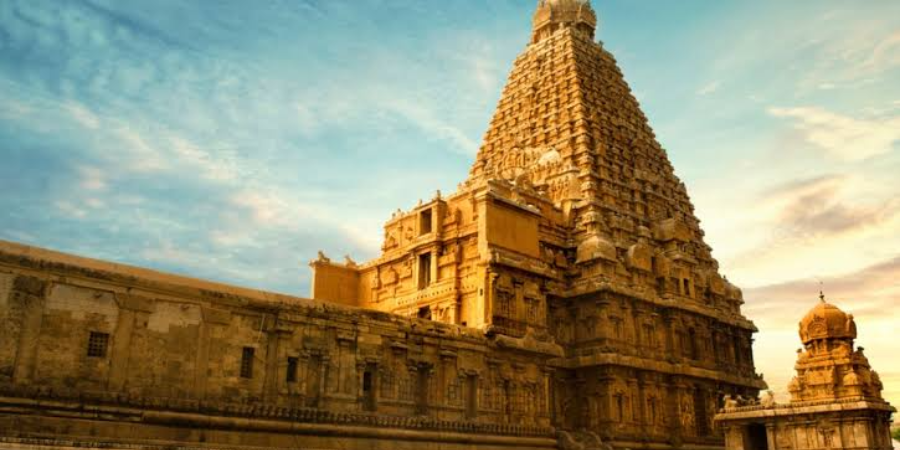

Known by many as Thanjai, formerly Tanjore, Thanjavur (Tamil: [t̪aɉdőa̐ʋuːɾ]) is a city in the Indian state of Tamil Nadu. It is Tamil Nadu's eleventh-largest city. A significant hub for southern Indian architecture, art, and religion is Thanjavur. The majority of the UNESCO-designated Great Living Chola Temples are found in and around Thanjavur. The most important of these, the Brihadeeswara Temple, was constructed in the city center by Rajaraja I, the Chola ruler. One of the biggest bull statues in India is housed in this temple. It is called Nandi and is carved from a single granite rock.[2] Tanjore painting, a form of painting exclusive to the area, is also produced in Thanjavur. The Thanjavur District Office is located in Thanjavur.
Though some academics think the city has existed since then, there are no mentions of Thanjavur in Tamil records from the Sangam period (third century BCE to fourth century CE). The Chola king Karikala fought a confederacy of Cheras and Pandyas at the Battle of Venni, which took place at Kovil Venni, which is located 15 miles (24 km) east of the city. The Chola kingdom vanished into oblivion following what appears to have been an invasion by the Kalabhras in the third century CE. The Mutharayars subjugated the area around modern-day Thanjavur in the sixth century and controlled it until 849.
During his assault of Srirangam between 1365 and 1371, Kampanna Udayar is said to have taken Thanjavur. Vijayanagara's supremacy over Thanjavur is confirmed by the 1443 inscription of Deva Raya, the 1455 inscription of Thirumala, and the 1532 and 1539 land grants of Achuta Deva.[11][19] The Thanjavur Nayak empire was formed in 1532 by Sevappa Nayak (1532–80), the Vijayanagar viceroy of Arcot who became an independent monarch in 1532 (or 1549, depending on various accounts).[20] Notable Nayak dynasty rulers of Thanjavur included Achuthappa Nayak (1560–1614), Raghunatha Nayak (1600–34), and Vijaya Raghava Nayak (1634–73).The Thanjavur Nayaks were renowned for their support of the arts and literatur.
Thanjavur Temple
Brihadishvara Temple, also known locally as Thanjai Periya Kovil (lit. "Thanjavur Big Temple") and Peruvudaiyar Kovil, is a Shaivite temple that was named Rajarajesvaram (lit. "Lord of Rajaraja").[3][4] Hindu temple at Thanjavur, Tamil Nadu, India, situated on the south bank of the Cauvery River and constructed in the Chola architectural style [5].[1][6] It is a prime example of Tamil architecture and one of the biggest Hindu temples.[7] Another name for it is Dakshina Meru, or Meru of the South.[8] The temple was constructed between 1003 and 1010 CE by the Chola emperor Rajaraja I. It is included in the "Great Living Chola Temples" UNESCO World Heritage Site, along with the roughly 70 km (43 mi) and 40 km (25 mi) away Gangaikonda Cholapuram temple and Airavatesvara temple.
